Stay calm. Don’t panic. That’s the advice most experts give to anyone bitten by a venomous snake. Well, easier said than done!
If you bowhunt in snake country, it’s not a matter of if you’ll ever encounter a snake, but when. Last September, as I was hiking into a remote area in northcentral Pennsylvania, I found a heavily-used deer trail intersecting an old logging road and started walking the trail to see where it went. I didn’t even take a whole step when I froze at the sight of an Eastern Timber Rattlesnake waiting in ambush only five feet in front of me.
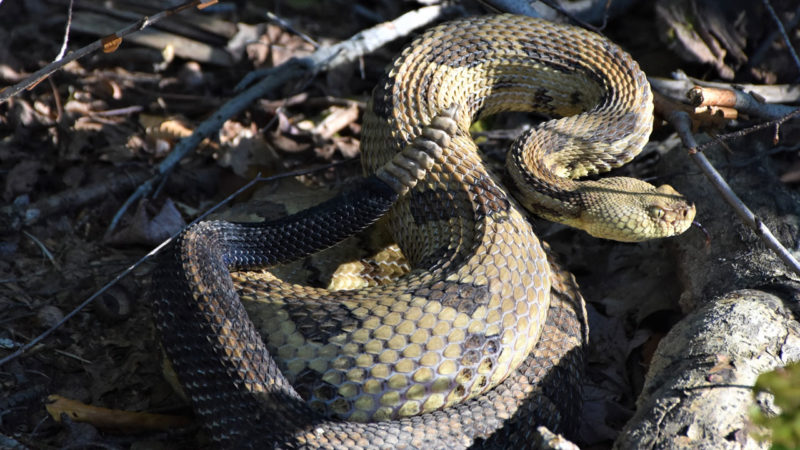
It was coiled up in a shallow divot behind a rotting piece of wood, eyes fixed on the log and whatever tasty critter might come running in front of it. What amazed me most was how the snake had virtually flattened itself as it blended in with the leaves and foliage. Only when I poked it with a stick did it inflate to normal size, and it was definitely much larger than I’d first realized!
Some people are terrified of snakes. I’m not. But I am cautious. And when I’m traipsing around in snake country, I always take extra care about where I step, or if I’m climbing or under stuff, where I place my hands. I’ve always wondered, though, what would I do if I ever got bit? What procedures should hunters take to ensure survival?
Identification and Procedure
First of all, it’s important to identify the snake that bit you. Even a bite from a non-venomous snake can have consequences without proper care. You may not experience the wrath of venom burning through your veins, but the wounds can quickly become infected and, if left untreated, deadly.
If there’s any question at all whether or not the snake is venomous, call 9-1-1. Also, be ready to describe the snake to the emergency operator. This is the most important information for them to know in regards to how to treat you and what anti-venom to use. Each anti-venom is specifically tailored for the species of snake.
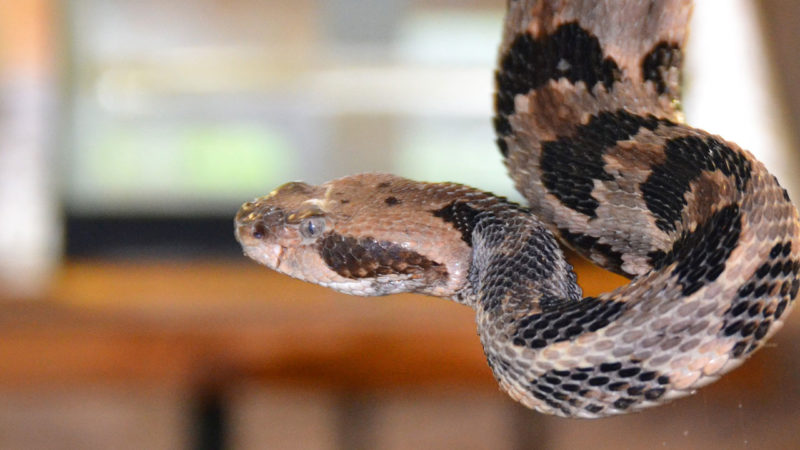
Assuming that you’re in an accessible area when the bite occurs, stay calm and remain as still as possible to keep the venom from spreading. Cover the wound with a loose, sterile bandage. Remove all jewelry from the affected area as well as shoes and boots if the bite is on your foot or leg. I’d recommend removing any belts or other pieces of tight clothing that might inhibit circulation.
How much time you have to get to the hospital depends on the type of snake that bit you. The bite from coral snakes, for instance, can take 12 hours or more to fester into something serious. However, bites from rattlesnakes tend to get real serious real fast if you take them for granted.
For years, the common advice for snake bite treatment was to apply a tourniquet above the wound, or even more insanely, use a knife to cut an “X” over the wound so you could suck out the venom.
Both of those are big no-no’s nowadays. Healthcare professionals indicate that a tourniquet (as well as the application of an ice pack) cuts off circulation and enables the venom to build up in the tissue, which can ultimately cause more damage.
And sucking out the venom is bad because it then enters your body through your mouth.
A Matter of Time
According to the Center for Disease Control and Prevention, approximately 7,000 venomous snake bites are reported in the United States every year. About 7 of those bites are fatal.
In 2015, a man in Medix Run, PA, died from a rattlesnake bite. He was at his camp, located in a very rural area, and couldn’t get help in time. By the time they got to where they could access a landline phone (no cell reception in that part of the state) and paramedics finally arrived, he was already experiencing acute respiratory distress. He was given an anti-venom, but it was too late. He was only 39.
Stories like this hit home for me considering that I hunt remote sections of public land, often miles from the nearest road. But even if the bite occurs closer to civilization, an hour drive to a hospital can be too far.
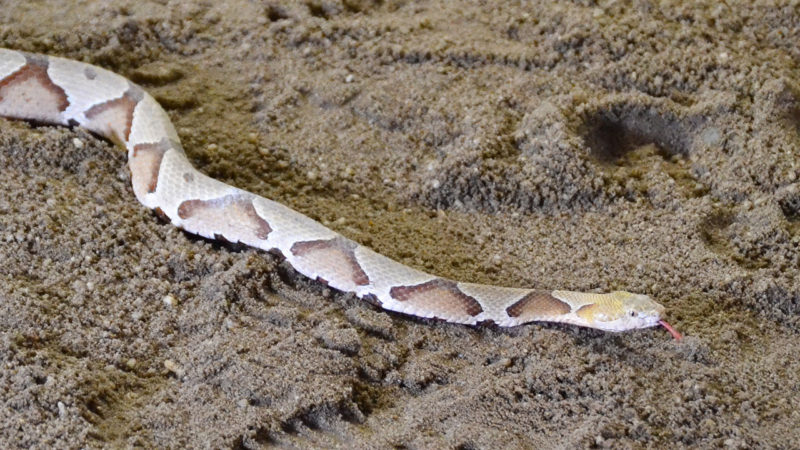
If you’re like me, and so many other hunters who thrive in wilderness, make sure you have a plan “just in case.” Make sure that your spouse, or perhaps a trustworthy friend, know where you’re hunting so that they can contact help on your behalf if needed.
Also, it doesn’t hurt to carry a snake bite kit. There are numerous kits available (cost generally $20-25), each containing similar items, such as a suction pump to draw out venom, sterile pads, alcohol swabs, and even small razors.
The current recommendation by health professionals may be to NOT cut an “X” over the wound, but I can assure you of one thing: if I’m in the wilderness and that’s my only option, I’m going to give it a shot. It’s better than doing nothing at all. If you’re miles back in the woods, the long walk or bike ride back to the truck could be your last, so almost anything is worth a try.
An Ounce of Prevention
Of course, there’s that old adage about an ounce of prevention being worth a pound of cure. That certainly applies to snake encounters.
After encountering that Timber Rattlesnake last fall, I don’t take for granted where I walk anymore. Also, I wear knee-high rubber boots at all times. Snake chaps are a great option, too, and when I remember it, I carry a walking stick to test the areas in front of me that aren’t clearly visible or that look snaky.
I shudder when I think of how many times I’ve hiked through that same area in my regular hunting boots, or made the trek back to the truck in darkness after hunting.
No flashlight was ever needed because the logging road was fairly wide and there always seemed to be enough moonlight to see by. Now, though, I use a headlamp to light the way, even if I don’t actually need it. That’s the thing about snakes. They can be just as active at night because that’s when much of their prey is also active.
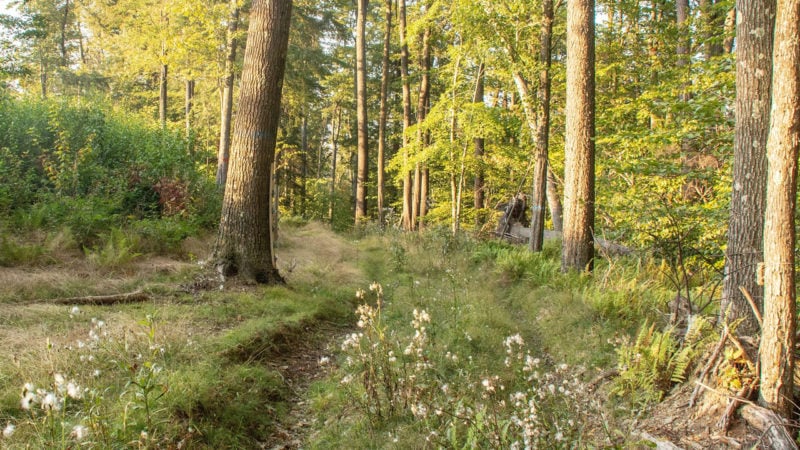
Most venomous snake bites occur due to some sort of negligence, such as knowingly entering snake country without caution. Many people also tempt fate and harass snakes because they think it’s fun. These are recipes for disaster. Most snakes don’t act aggressively unless provoked, even the ones that are venomous.
Your first encounter with a venomous snake can be exhilarating. They’re fascinating creatures, after all, as beautiful as they are deadly, and it can be awfully tempting to get too close or accidentally stray within striking distance. Most snakes (of any species) can strike up to a distance of half their body length, so always be sure to keep a wide berth when walking around one.
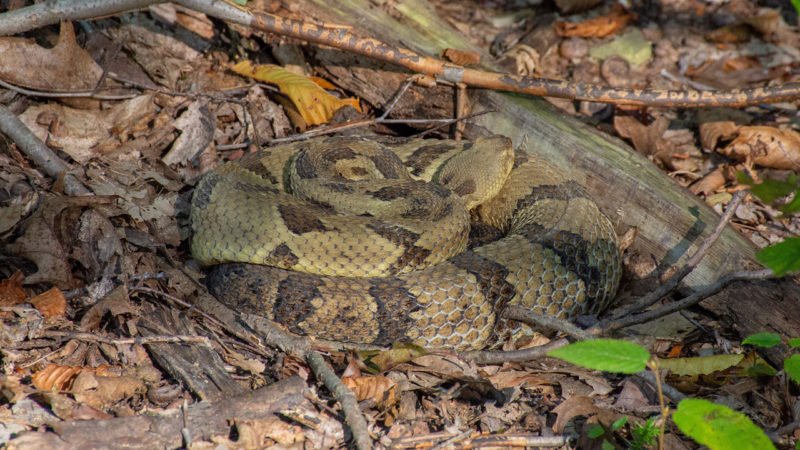
Also, keep in mind when snakes are most active. Snakes are cold-blooded and unable to increase their body temperature to withstand cold weather. Therefore, most are active when the temperature is between 77 and 90 degrees Fahrenheit.
Consider, too, that even when they’re active, they’re typically setting up in areas where there are lots of rodents – although I’ve seen them stretched across gravel roads, soaking up the sunshine on warm fall days.
Living Together
In the United States, venomous snakes fall into two categories, coral snakes and pit vipers. Coral snakes are the least dangerous. It usually takes 12 to 18 hours for symptoms to start to appear. In the past 60 years, there has been only one death attributed to coral snakes.
Pit viper bites present a much more urgent situation, and the effects are typically felt immediately. Pit vipers include Timber Rattlesnakes, Copperheads, Eastern Diamondback Rattlesnakes, Western Diamondback Rattlesnakes, Cottonmouths (a.k.a. Water Moccasins), and Massasauga Rattlesnakes. They often have very distinguished features, such as V-shaped heads and elliptical-shapes pupils.
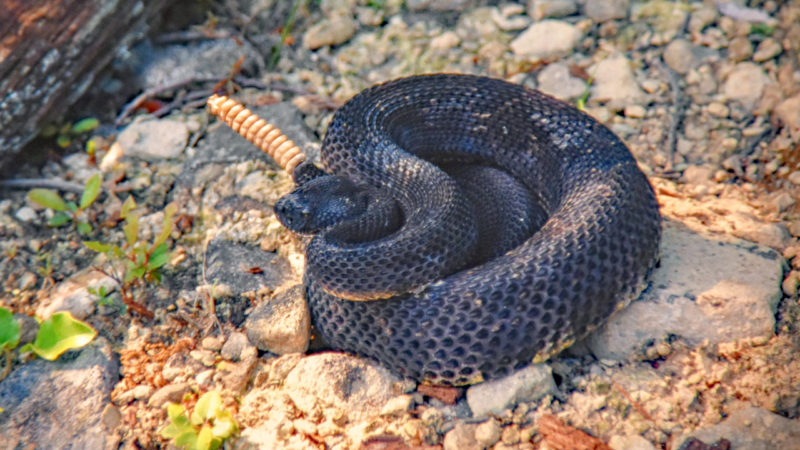
Some people judge a venomous snake by its color or markings on its back. This isn’t always accurate, though, because snakes can come in a plethora of color variations, and depending on time of year and whether they’re moulting, distinguishable patterns may not always be visible.
The best thing you can do if you ever find yourself in snake country is know which types of snakes are likely to live in that area. Know where they’re likely to be found and never, ever, take anything for granted.
When you respect these animals and their environment, you have nothing to fear. You can both exist in the same ecosystem, enjoying the very thing you were both born to do – hunt.

 By
By 



